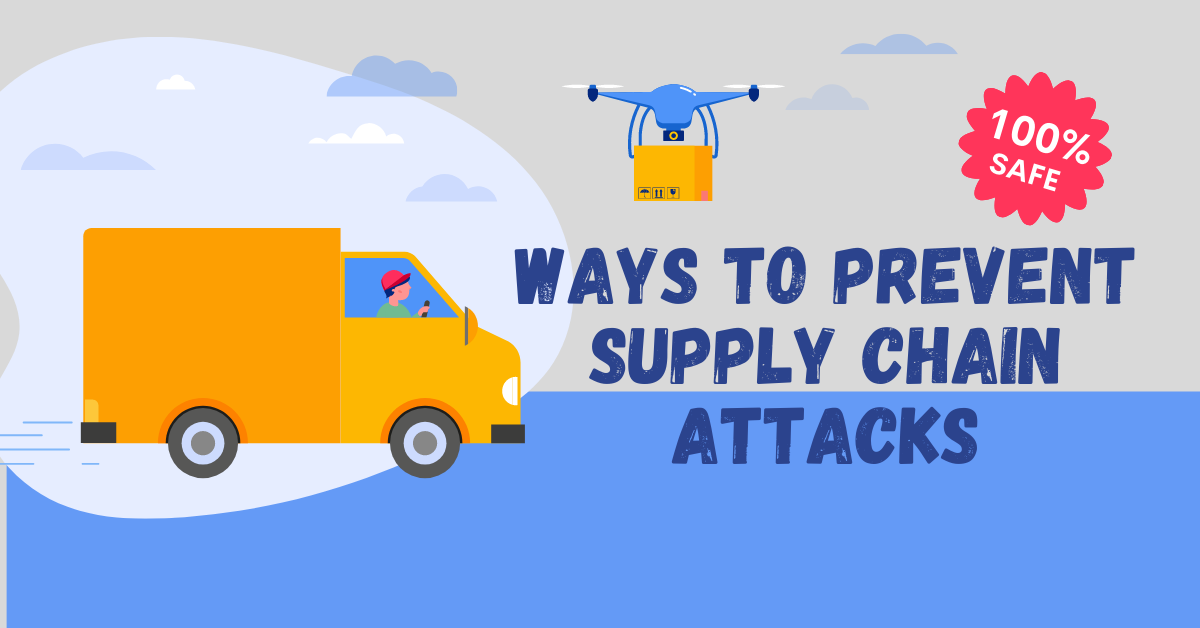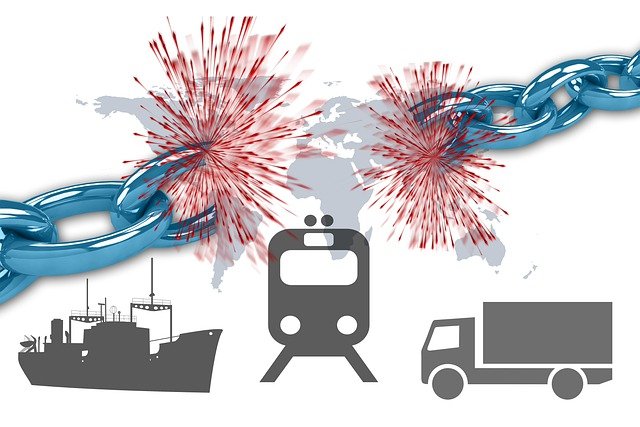Here, we will show you ways to prevent supply chain attacks.
Your supply chain is the lifeblood of your business. When it works properly, you can get much work done efficiently while making your customers happy to work with you. However, there is a lot of valuable information in supply chains, and you need to ensure that it is safe and secure to help prevent attacks.
It is estimated that supply chain attacks have increased by 78% in the past few years. This makes it a big concern that companies must work with now rather than putting it away until the future. Taking the right actions will protect your ecosystem right now and will make it less likely that there will be a potential attack against you later.
Companies must be ready to take the reins and keep the attacker out. Some of the steps that they can take to prevent supply chain attacks include:
Table of Contents
Know Who is In the Ecosystem
The first step that you need to take to protect your supply chain is to have a good idea of who is in the ecosystem and what their job is. This takes a little time on your part to be prepared. You can't let everyone, and you can't allow everyone full access to the whole thing, or you set yourself up for failure.
Keep in mind that you are now part of an ecosystem, and there are a lot of threats that come to you. Many of these will come asymmetrically. You are not always the intended target, but you will still have to deal with them, or a hacker will have a lot of fun taking your information.
To ensure you know what is happening in the ecosystem, consider doing a risk assessment to take a look. This helps you to analyze the system and identify some of the possible issues that may be there. This is one of the best ways to ensure that you can fix some of the problems later on.
Understand Security Postures
Similarly to your business's security posture, your ecosystem needs one of these here. Understanding how members of that same ecosystem handle their security, the security policies, regulations, and compliance with these security measures can help you get started.
As you look at the ecosystem, you may notice that there isn't a lot of security within the ecosystem. While this is not uncommon, it is something that you need to pay attention to. If your system lacks the right security, you must sit down and put one together and ensure everyone is trained to use it.
Through this plan, you need to know whom you can call, either the suppliers or the end customers, if there is a breach in the supply chain. In most cases, the faster you can respond to the issue, the less damage there is in the system.
Always Be Informed
Another thing that you should consider doing is staying informed and aware of some of the things that are going on in your industry. If you hide away from the information, it is hard to know when things are changing and when you may need updates or other changes to keep your supply chain safe.
There are different groups you can join that will keep you fully informed along the way. The FBI's InfraGard program is a good option. This public-private sector partnership allows collaboration to protect critical information, including some of the information in your supply chain.
If you do not want to work with that group, you can consider ISAOs to provide information. These will provide a lot of information and analysis on many different topics, so you are more likely to find some of the information you need.
Leverage Assessments and Testing
How do you know that your system is safe if you do not take the time to test it out? This is where penetration testing will come in. Penetration testing is done by ethical hackers who are helping a business out. Their goal is to go through the system and network, with the company's permission, and find and exploit all of the vulnerabilities they find.
When they are done, they will present a report to the company, sharing what they found, where they found it, and some of the steps that they believe the company should follow to avoid an actual hacker coming in and causing some of the damage.
While this kind of testing is a useful way to find some of these gaps in the system, companies have tried to limit the scope and eliminate using these because they want to get certain answers or hope to save face to the news and others in their industry. This may look good now, but it does leave the company open to a big attack.
If your company wants a penetration test, do the whole thing. Let the ethical hackers go to town and see what problems are present in the system. This may be hard to hear, especially if you have worked hard to keep the system safe, but it gives you a clear picture of what is working and what you can improve.
Keeping Your Supply Chain Safe
Finding ways to keep the supply chain safe is always a good idea. There are a lot of people who would love to get on and gain access to the data that is inside there. Having a good plan in place to keep the whole thing safe will be key to ensuring your supply chain is not turned off or run down. With the help of the tips above, you can make this a reality.
Ways To Prevent Supply Chain Attacks: Frequently Asked Questions
How can supply chain attacks be prevented?
There's no single foolproof method, but a layered approach combining various strategies is most effective:
- Vendor Risk Management: Thoroughly assess potential vendors' security practices before partnering. Look for certifications, security policies, and a history of addressing vulnerabilities.
- Patch Management: Ensure your systems and software are up-to-date with the latest security patches to close known vulnerabilities attackers might exploit.
- Asset Inventory Creation & Management: Maintain a comprehensive inventory of your organization's hardware, software, and cloud resources. This helps identify potential weaknesses and prioritize patching.
- Sandbox Testing: Test new software or updates in a secure sandbox environment before deploying them to your main network. This helps detect vulnerabilities before they can be exploited.
- User Awareness Training: Educate employees on recognizing phishing attempts, social engineering tactics, and best practices for secure software downloads.
- Access Control Policies: Implement strong access controls to limit access to sensitive data and systems only to authorized users based on the principle of least privilege.
- Zero Trust Architecture (ZTA): Implement a ZTA approach that verifies user and device identity before granting access to resources, regardless of location.
- Security Monitoring: Monitor your network and systems for suspicious activity that might indicate a potential attack.
- Incident Response Plan: Develop and regularly test an incident response plan to ensure a coordinated and efficient response in case of a breach.
What mitigates the risk of supply chain attacks?
Several factors lessen the risk:
- Vendor Transparency: Choose vendors with a track record of transparency regarding their security practices and a commitment to responsible disclosure of vulnerabilities.
- Code Signing and Verification: Implement code signing and verification processes to ensure the integrity of software updates and downloaded applications.
- Multi-Factor Authentication (MFA): Use MFA to add an extra layer of security to access control, making it harder for attackers to gain unauthorized access even if they steal credentials.
- Network Segmentation: Segment your network into different zones, limiting the potential impact of an attack if a vulnerability is exploited.
How do you ensure supply chain security?
Supply chain security is an ongoing process, not a one-time fix. Here's how to prioritize it:
- Regular Vendor Risk Assessments: Don't rely on a single evaluation. Regularly reassess your vendors' security posture to stay informed of any changes.
- Collaboration: Collaborate with your vendors on security best practices. Open communication is key to building a strong defense together.
- Stay Informed: Stay updated on the latest supply chain attack trends and vulnerabilities to adapt your security measures proactively.
What's the most overlooked element of preventing a supply chain attack?
People: While technical measures are crucial, human error and social engineering tactics can be effective entry points for attackers. User awareness training and fostering a culture of security are essential.
Why are supply chain attacks hard to prevent?
Supply chains are complex and interconnected. Attackers can target any point in the chain, from software vendors to third-party service providers. Maintaining complete control and visibility over all potential vulnerabilities makes it challenging. Additionally, the constantly evolving nature of cyber threats necessitates ongoing vigilance and adaptation of security strategies.
INTERESTING POSTS
- Best Antivirus For 2022
- Best VPN For 2022
- Use Utopia P2P Ecosystem! Keep Your Eyes Open!
- CCleaner: Hackers break into Avast Antivirus through an unsafe VPN
- UK's electricity system gets hit by cyber-attack, but no blackouts
- Key Functions Performed By The Security Operations Center (SOC)
- Top 5 Pro Tips About Providing Cybersecurity For Business
About the Author:
Christian Schmitz is a professional journalist and editor at SecureBlitz.com. He has a keen eye for the ever-changing cybersecurity industry and is passionate about spreading awareness of the industry's latest trends. Before joining SecureBlitz, Christian worked as a journalist for a local community newspaper in Nuremberg. Through his years of experience, Christian has developed a sharp eye for detail, an acute understanding of the cybersecurity industry, and an unwavering commitment to delivering accurate and up-to-date information.









